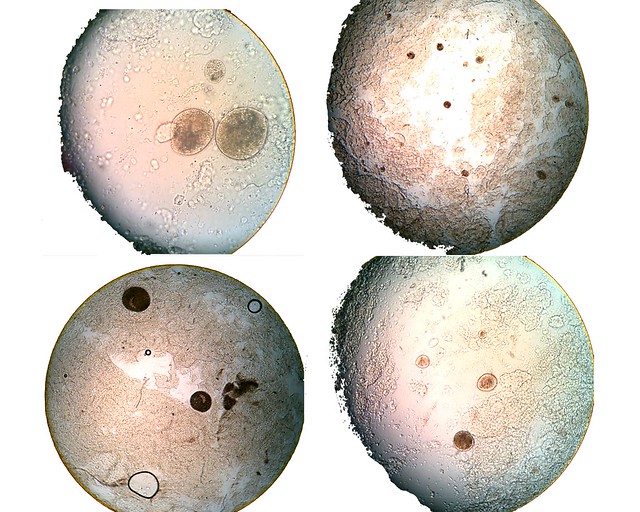White Spot (Ichthyophthirius multifiliis)
This parasite seems to be the most widespread parasite in the world on fish. White spot can multiply between 4-32 degrees Celsius. The annoying thing about White Spot is that they are massively present at outbreaks, spread all over the body. This is in contrast to other parasites.
Aquarium keepers with tropical or saltwater fish also know this parasite.
White Dot under the microscope is dark brown to black in color. A white curved stripe in the nucleus is recognizable, provided that the parasite is almost fully grown. They are not dimensionally stable and can maneuver through narrow corridors.

Why is White Dot called that? This is because the fish all get white dots as symptoms. A young parasite nestles in the mucous membrane of a fish and then grows into an adult White Spot. At the place where the parasite has encapsulated itself, a white dot forms in the mucus layer.
To reproduce, it falls off the fish and forms a cyst. An average of 2,000 offspring develop in the cyst. They are called theronts. After leaving the cyst, these offspring look for a new host. Once they land on a fish, they grow until they are adults… And so the circle is complete!
However, beware, not every fish gets the characteristic white dots on the skin. Or only at a very late stage of the outbreak. Sometimes you don’t see the parasite on the skin, but you can see it on the swab of the mucus layer. Under the microscope you will probably see many of the parasites!
Cycle
The total cycle goes from theront in the water, to wandering parasite on the fish, to encapsulated in the skin, to cyst outside the fish. The total duration of the cycle depends on the water temperature. This can be four days at high temperatures ( > 21 ⁰C) to twenty days at winter temperatures ( < 8 ⁰C).
Danger
The danger of White Spot is its rapid outbreak, because each fully grown parasite produces up to 2,000 therontes. In addition, several times treatment must be done with severe pesticides to kill all parasites. This is because during the cyst stage and during the encapsulated stage, no agent has an effect on White Spot. These products are based on Formalin (or Acriflavin) combined with Malachite green. Finally, a warning about the use of such substances. These are carcinogenic (carcinogenic). A face mask and gloves are recommended.
Name: White Spot (Ichthyophthirius Multifiliis)
Species: Cilliate
Multiplication: One parasite forms a cyst that bursts open with possibly 2,000 therontes
Size: Different up to a maximum of 0.5 mm (=500 microns)
Magnification microscope: 40x is sufficient
Cause of outbreak: Poor or varying water quality, varying temperature, stress, contamination
Symptoms: white dots on the mucous membrane, abnormal behavior such as fin pinching, jumping, chafing, not eating, seclusion, lethargy.



